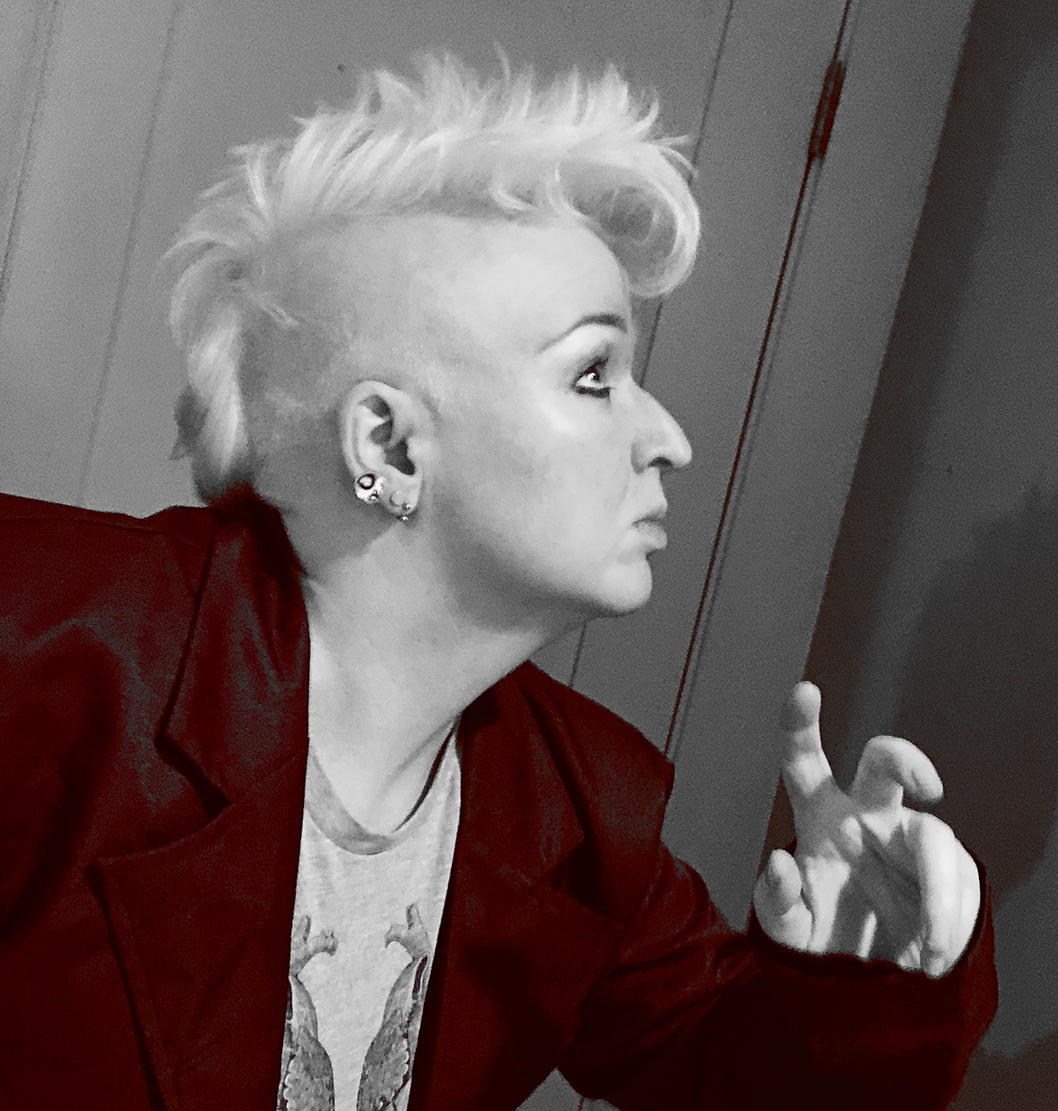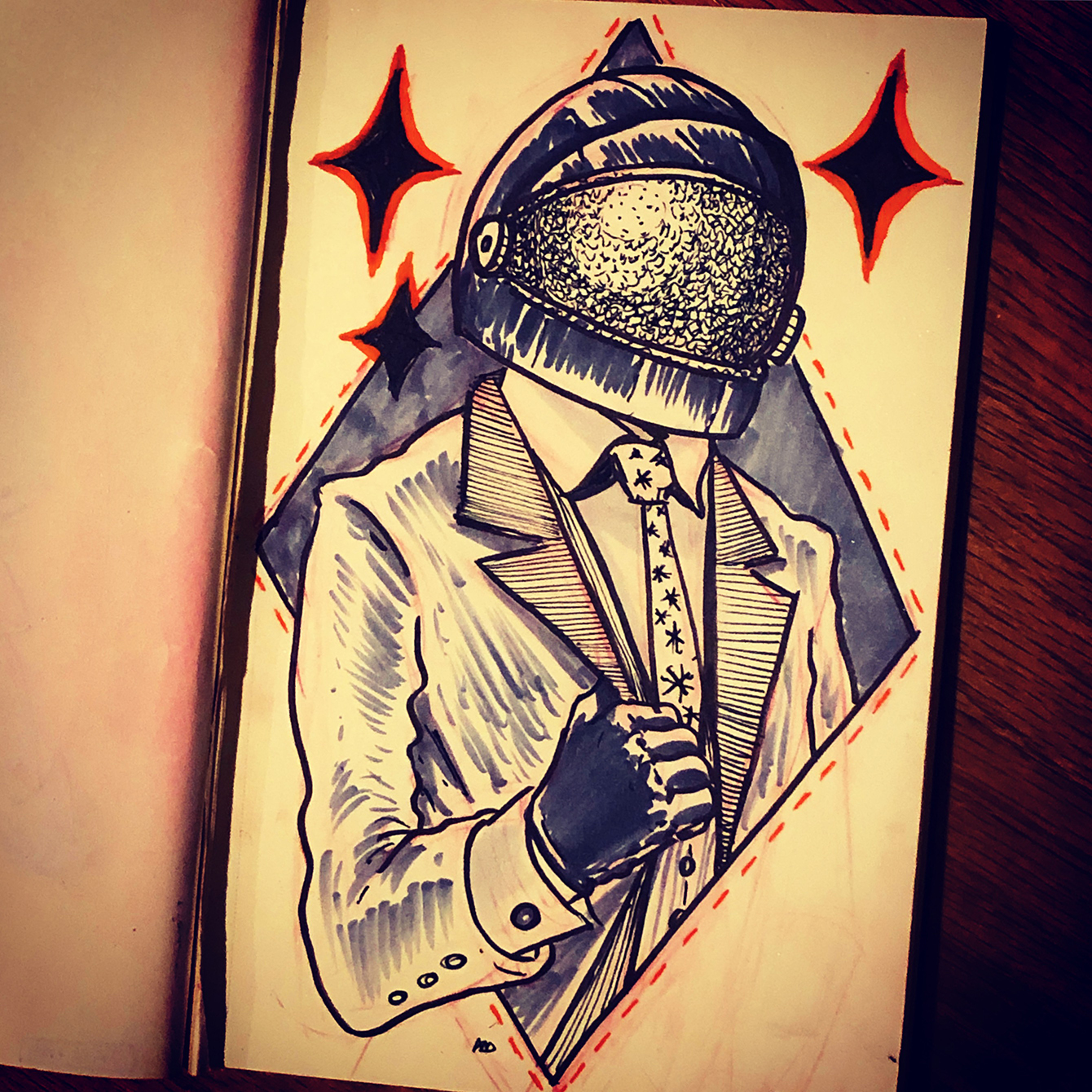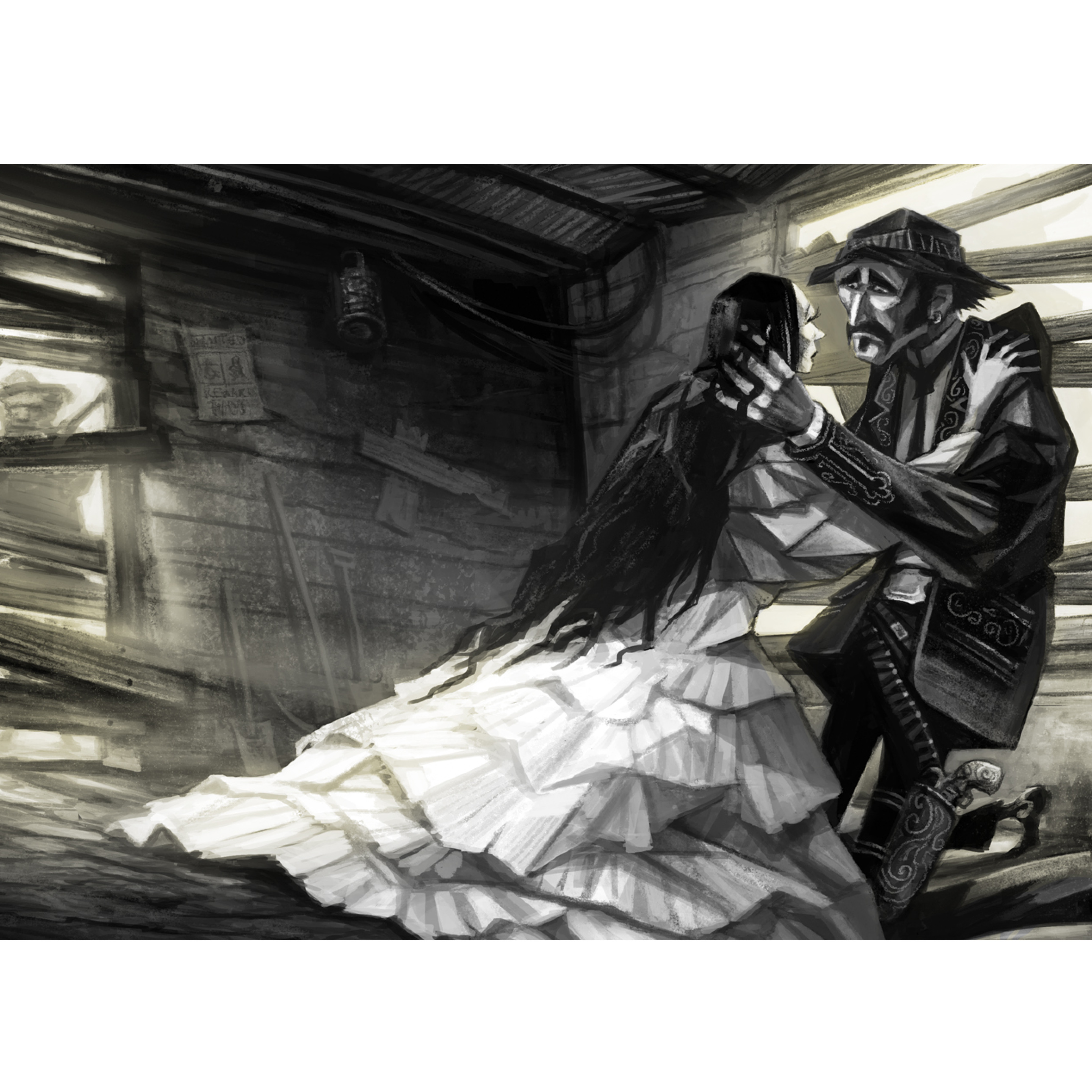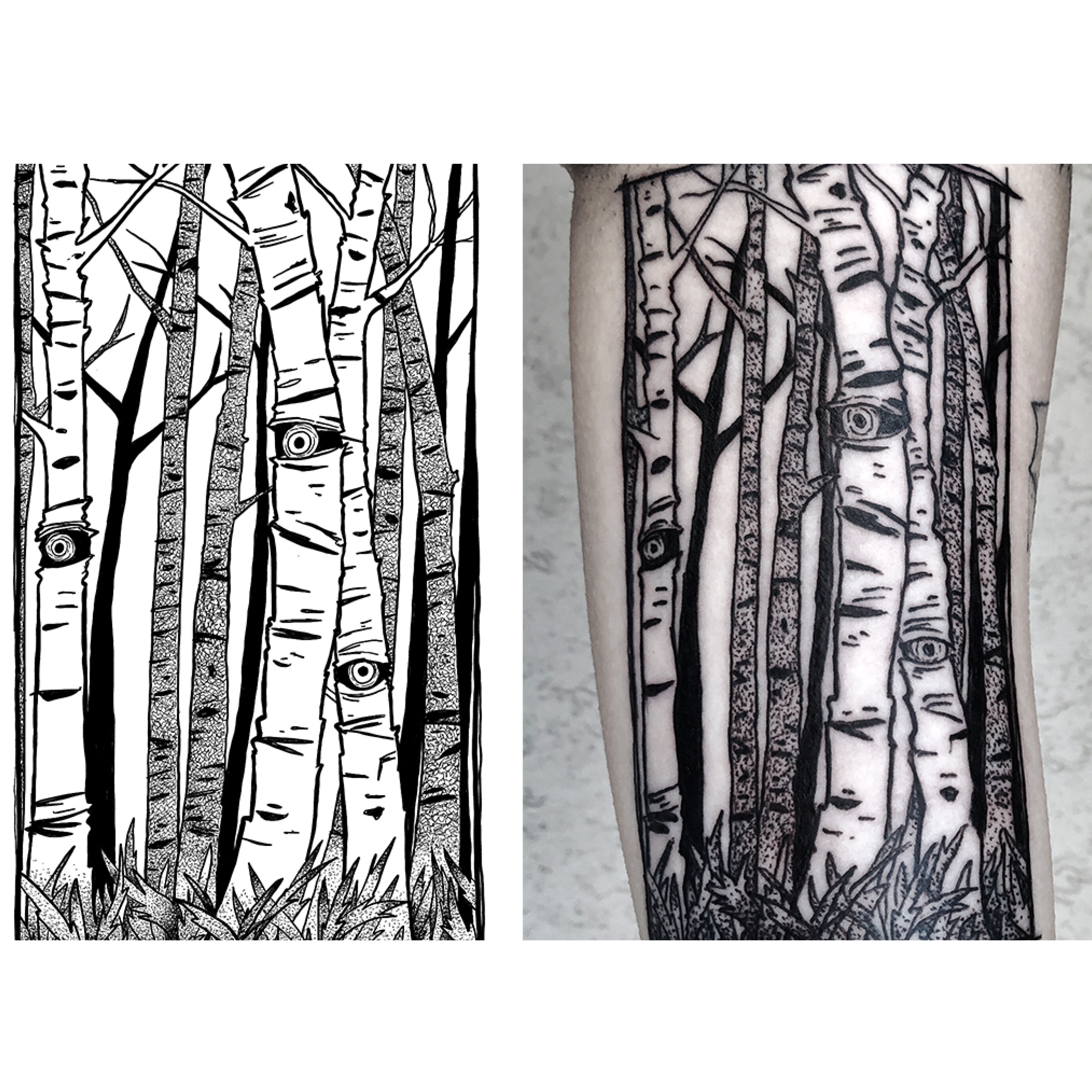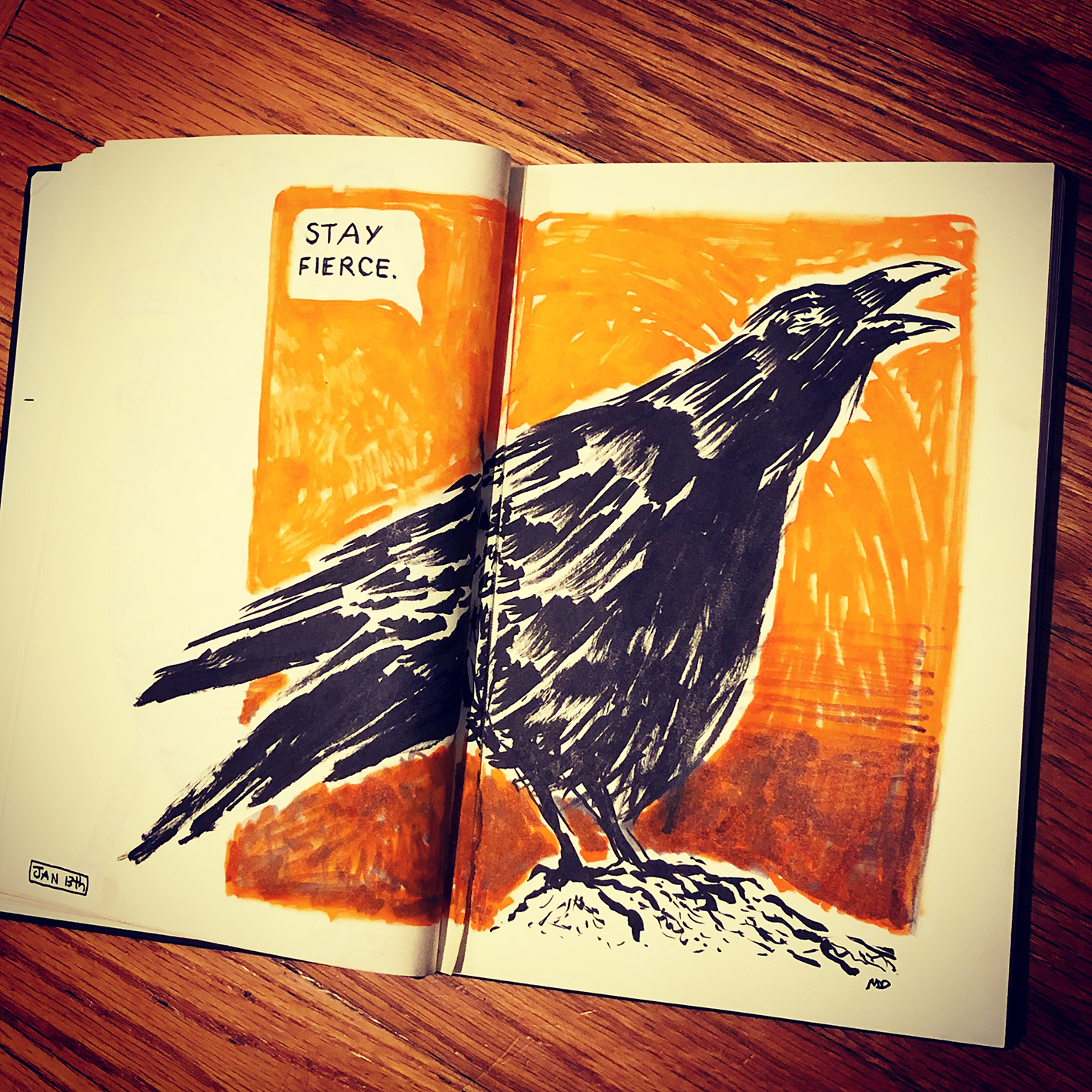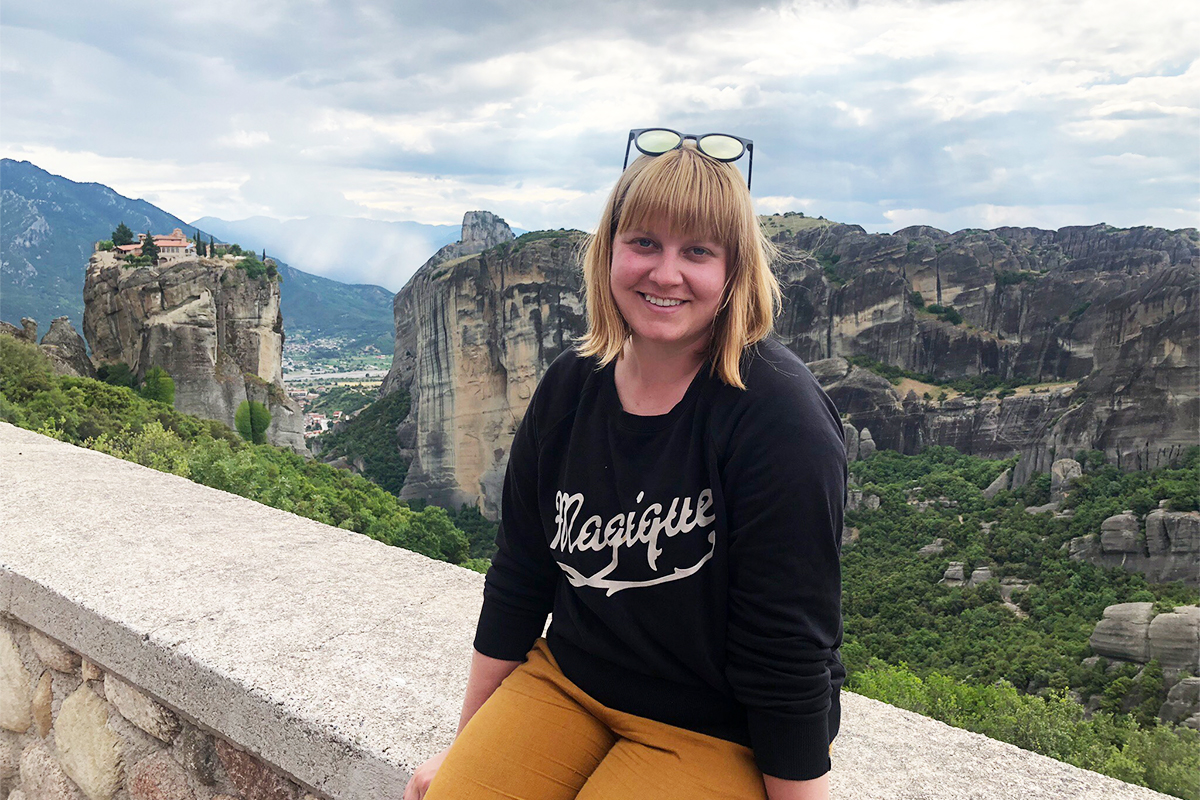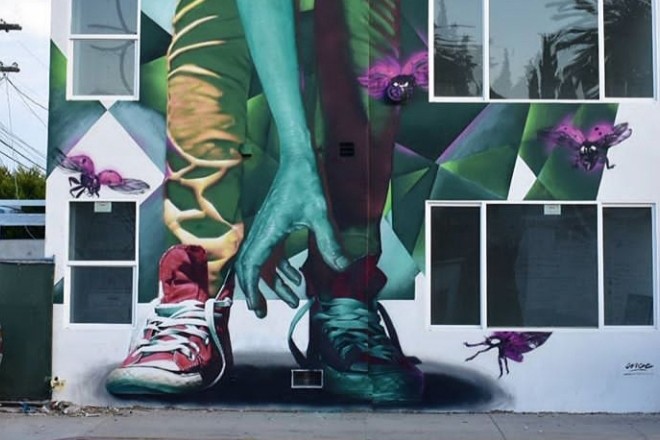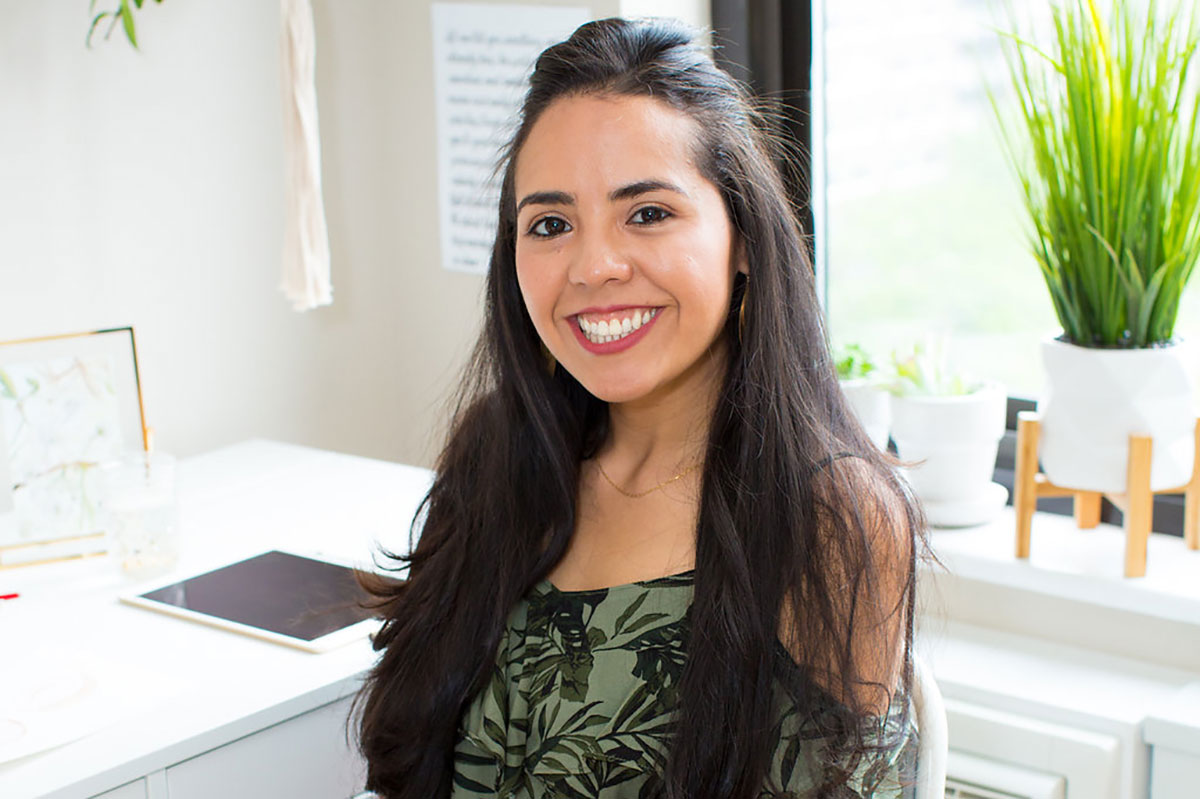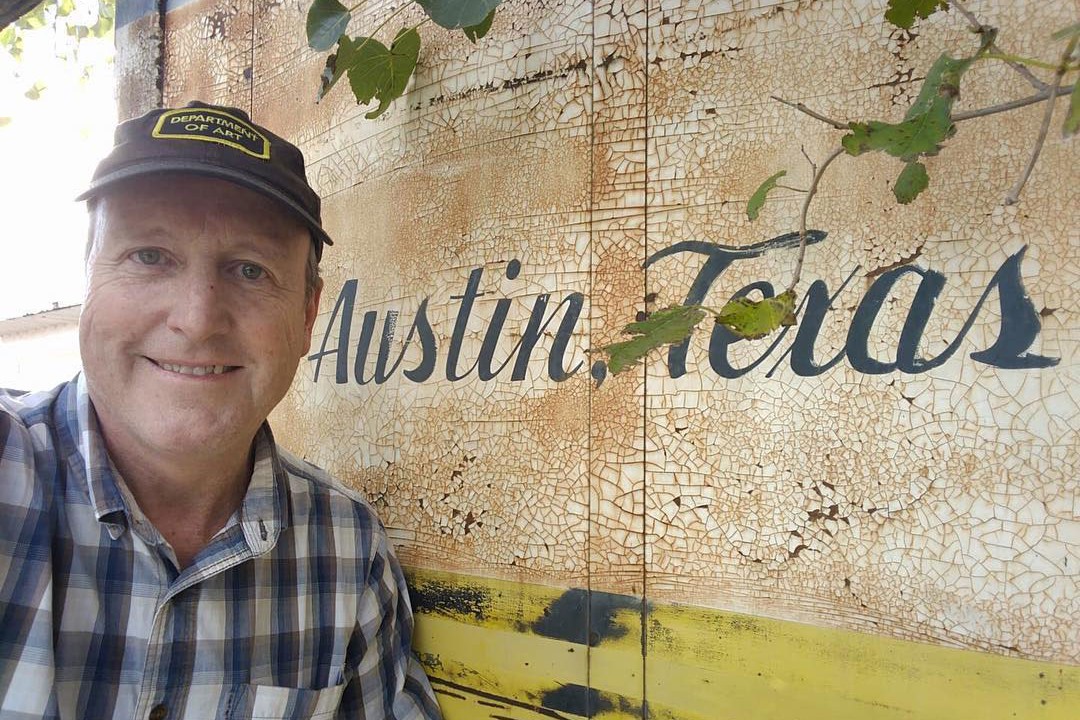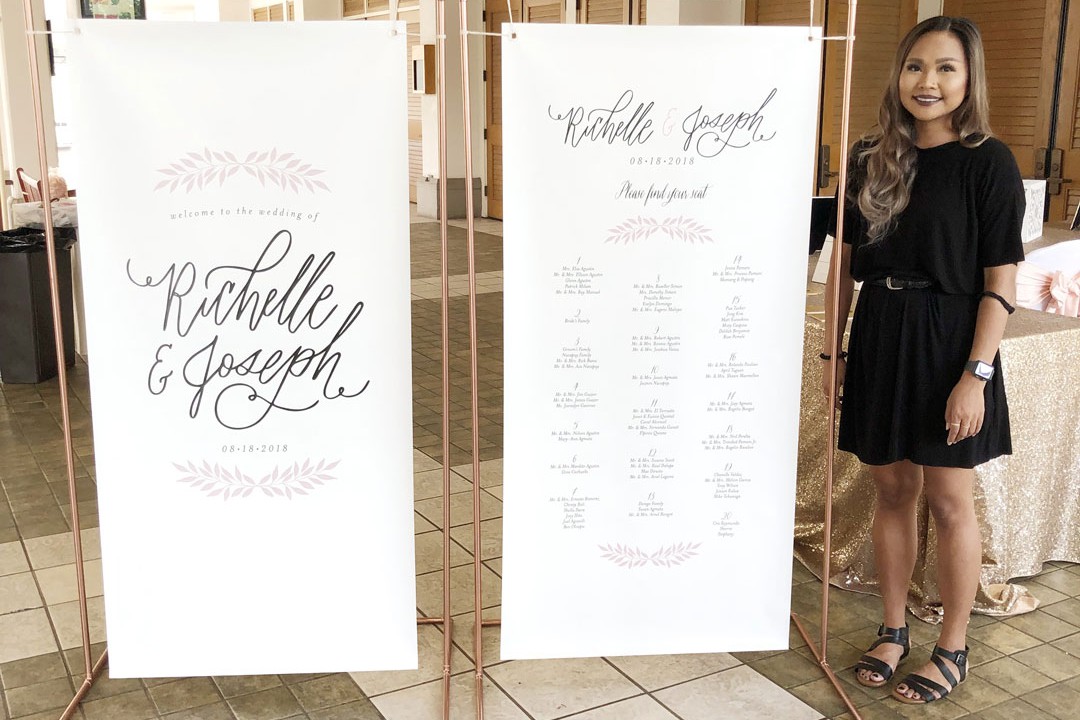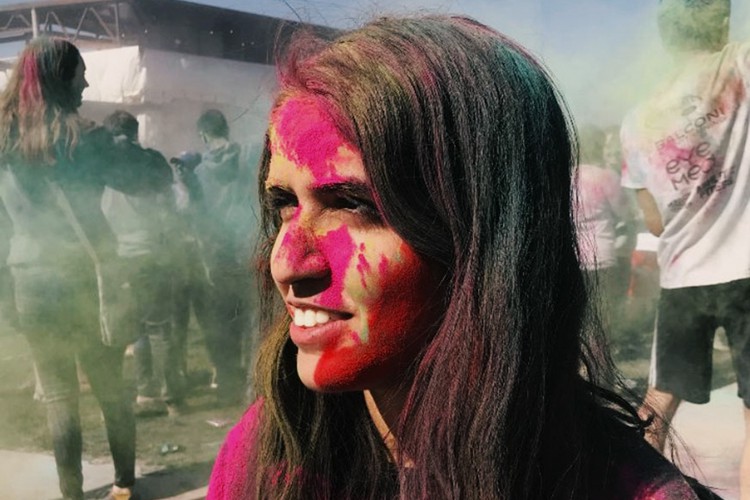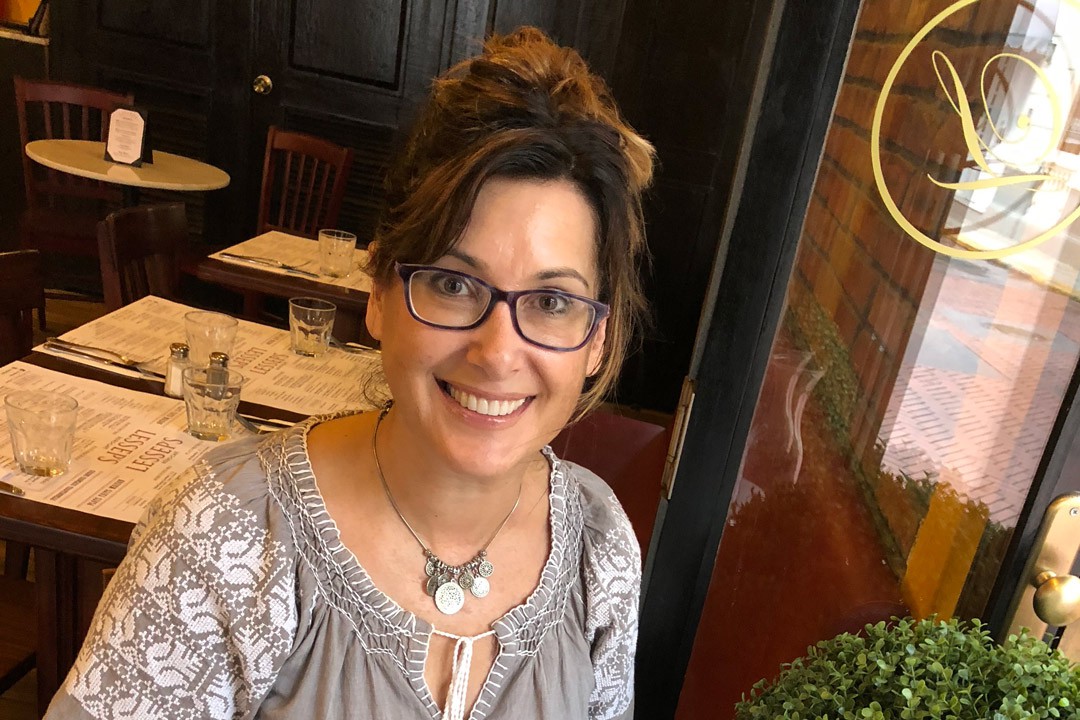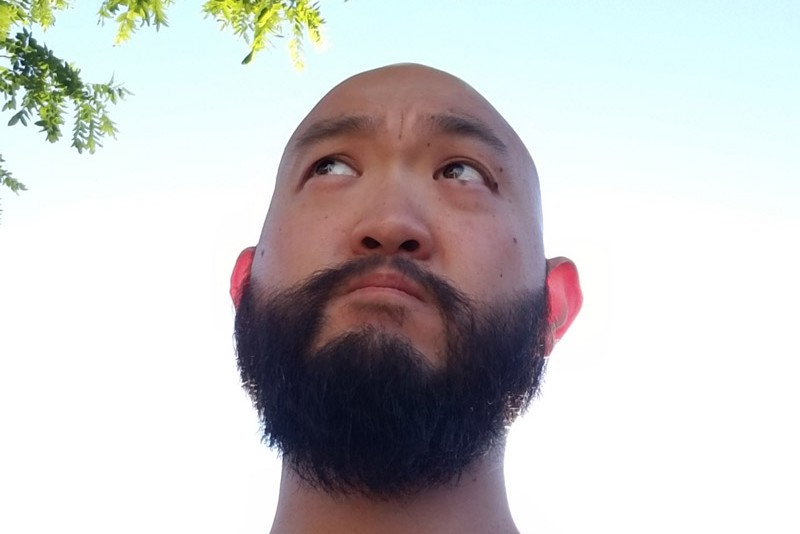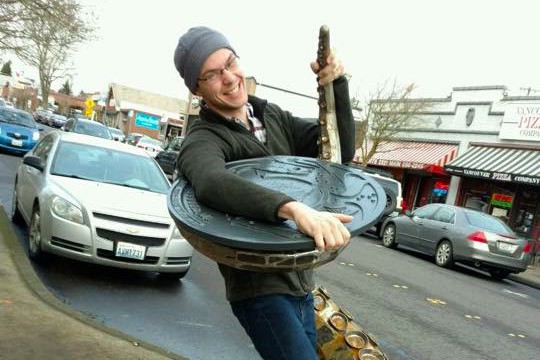Inspired by “geeky pop sci-fi culture” and mid-century illustration, Portland-based freelance illustrator and tattoo artist Melissa Dow @melissadowart shares the importance of drawing every day, advice learned from entertainment industry professionals and the challenges of taking her art from paper to skin in her interview for the latest Pentalic blog.
By Pentalic
What inspired you to become an artist?
It probably sounds a bit cliché, but there wasn’t ever a time in my life where I didn’t want to be an artist. I was drawing the moment that I could pick up a pencil and I was very self-motivated to doodle and paint. I think it’s just how my brain is wired. My parents were always supportive and encouraged me to be creative, plus it was fun to be the ‘art kid’ in school. There were some periods in my life, when I was younger, where I wasn’t as focused on art and tried other things, but I always came back to art. Art is what makes me the happiest; making art is when I feel the most me.
You tell us you have been taught by entertainment industry professionals from Disney, Nickelodeon, Reel FX, LAIKA, among others. What is the greatest piece of advice you have learned from these mentors?
I’ve learned so many great things from mentors and much more experienced artists over the years. There are five lessons that have really stuck with me. The first lesson is to remember that getting better at something is more about the journey, than the end result. Try not to look at your failures as negative things; failures are incredibly valuable lessons. Successes certainly feel good, but real growth happens when you try something new and fall flat on your face. It takes grit to get back up and try again, and that’s what will set you apart as an artist with the fortitude and heart to keep going, even when you aren’t feeling great about your progress. Artistic creation is a jog, not a sprint.
Second, draw all the time. It’s okay to do bad drawings. In today’s social media-driven world, it’s easy to think that artists out there create nothing but amazing work all the time. However, there are a lot of experiments and messes and false starts that were made those artists get to where they are now. Remember that comparison is the thief of happiness. Third, be patient and a little kinder to yourself when making art. You’ll be surprised at how much you will improve if you stick to it and work hard for it. Fourth, getting some fresh air is good for the creative spirit.
Fifth, use Photoshop filters with great caution.
Which artists have been the greatest influences to your artistic style?
I’m fairly all over the place when it comes to my favorite artists and inspiration. I can’t always be sure how much my favorites reflect in my art, but I really enjoy the work of contemporary illustrators and concept artists, such as Tomer Hanuka, Yuko Shimizu, Chris Appelhans, Pascal Campion, and Claire Hummel. Some of my favorite comic book artists include: Rachael Stott, Guy Davis, Jamie Hewlett, Sean Murphy, Darwin Cooke, Sean Phillips and Robert Crumb. I love the bold woodcut prints of Lynd Ward, and stunning poster art of Rhys Cooper and Tyler Stout. I tend to be drawn to visuals that have a strong use of line and/or a distinct sense of mood. I also absolutely adore the artwork styles used in games such as Borderlands and Bioshock. Basically, if something has a stylized comic book influence and lots of texture, I’m most likely going to dig it.
As someone who has a background in the realms of both traditional illustration and indie game design, which do you feel is more challenging: traditional art or digital art?
I think both traditional and digital have their own equally unique challenges, so it’s pretty difficult for me to say which one is the most challenging overall. With digital work, it’s often hard for me to keep in mind that in no way does a computer create instant shortcuts at getting better at something; a computer is simply another artistic tool at your disposal. Working digitally has certainly made my tattoo design workflow much more manageable and practical, and I would say that if I can embrace a tool that does that for me, I’m going to do it. I just try to remember that core drawing skills and technique will shine through, no matter what media you use, but the convenience of working digitally can be a slippery slope of false confidence at times.
When it comes to traditional, I do feel like there can be a pretty high learning curve with some media. There’s a certain subtlety and flair that takes some serious time and practice to execute, at least that has been my experience with working traditionally. Even though I use digital media more these days, nothing beats the tactile feel of pencil and ink on paper; I’m much looser and expressive on paper, but I have a hard time making something that I feel is finishedworking on paper.
Honestly, I love both, which is why I often will use a more mixed media approach with my illustrative work.
Favorite Pentalic products and why?
I am absolutely loving the Pentalic 365 Sketchbook. I’m picky about sketchbook sizes, and the 365 Sketchbook feels in that ‘just right’ place. The perforated pages are one of the most practical features in a sketchbook that I don’t see all that often. I love the warm quality of the paper, which holds up very well under erasing, inking, and all manner of doodling. It’s definitely one of my all-time favorite hardbound sketchbooks now. I’m so glad it comes in a four-pack set to keep me stocked up on sketchbooks for quite a while.
I also really like the Traveler Pocket Journal (again, perfect size and paper weight), and have started to dabble with the Paper for Pens pad, which is some of the best bleed-proof paper I’ve used, especially for markers.
In addition to doing freelance work and industry work, you are a licensed tattoo artist! What inspired you to become a tattoo artist and what has been the most challenging aspect of this type of art?
I had people telling me I should do tattoo art for quite a while, but, I honestly didn’t think about taking it too seriously until about two years ago. You are required to go to a licensed tattoo school, and that, in and of itself, was a barrier for me. I’d already gone to art school and wasn’t sure if I wanted to take the plunge with the time and commitment it would take to, not only get the necessary education, but to establish myself in a city full of a lot of really fantastic tattoo artists. But I had recently been laid off from my regular art gig, and the timing felt right. I ended up meeting a tattoo artist who ran a school in Portland purely by coincidence, and eventually got up the nerve to ask her about it. A couple of months later, I found myself starting my tattooing education. It all happened much quicker than I had ever imagined.
I’ve learned a lot of hard lessons transitioning from illustration into tattooing, and I would say one of the biggest things to keep in mind is that tattooing is not exactly like drawing. Skin is not paper, and the human body is not a drawing table. There is no eraser or undo key. A tattoo machine and needles behave much differently than a pencil, pen or brush. The approach is quite different. You cannot noodle on a tattoo for hours like you would on a drawing, as skin is fragile. You have to tattoo with confidence since the medium at its core requires you to pretty much put down lines with a single stroke. When I first started out, that transition was not easy for me to adapt to, and I quickly lost all of my confidence. It took me some time to gain it back, and while I wouldn’t want go through that again, I’m so glad I did. Learning tattoo artistry gave me a greater perspective and appreciation, not only for tattooing, but for my own personal growth.
Also, tattooing is very much a client-oriented business. It’s much different than sitting behind a computer screen in the comfort of your own home office or studio. People skills are vital; after all, you are interacting with your clients on a very personal level, and you need to be able to do that in a positive way with a wide variety of clientele.
As a graduate of Pacific Northwest College of Art, with a BFA in illustration, what is something that you learned during your art education that you would have never learned outside it?
For me, art school was a great place to have structure and accountability. I like having assignments and deadlines, which I’m not as good about self-imposing when it comes to my own personal projects. I also loved the sense of community I had with my peers. I was in very small classes and I enjoyed the closeness that that offered. My peers and I were all very supportive of one another. I was also lucky enough to have a great mentor while at PNCA, Martin French, who pushed me to be a better illustrator and creative thinker. I don’t think I would have had any of those learning experiences had I not attended art school. That education path isn’t always for everyone, but I’m very glad that I took it.
You tell us that you are inspired by graphic novels, contemporary and mid-century illustration, woodcuts and “geeky sci-fi pop culture”. Which is your favorite subject to draw and why?
Well, I’m currently very much into drawing fan art for fun, specifically Doctor Who-related fan art, which is pretty far down the geeky sci-fi pop culture rabbit hole. I’d say people in all forms, real or imaginary, have probably always been my preferred subject matter to draw, even way back when I was a kid. I think human beings, the sheer variety of them in all of their unique weirdness and complexities, are endlessly fascinating. They are also one of the most challenging subjects to draw; you could spend your whole lifetime drawing them and still have things to learn.
With tattooing, I currently prefer nature landscapes and space themes; anything where I can take a lot of stylistic liberties and use a ton of dotwork. I would eventually like to get into doing more illustrative, stylized portraits with tattooing as well, so my subject matter interests can begin to align more.
Do you have any advice for artists wanting to do tattoo art?
In terms of purely designing tattoo art, it’s always important to keep in mind that tattoo designs are very much ‘designs’, meaning that a strong sense of design is very important when you compose them. Contrast is absolutely vital, so you need to think about your lights and darks and how you can use negative space and value, to not only create interest, but to make sure the tattoo reads well on skin. Muddled, confusing designs also tend not to age as well. You are designing for the body, so placement is important. With my pre-drawn designs, I try to compose them in a way that will work with a few different locations on the body, often legs or arms, since those are my favorite places to tattoo.
Tattoo trends come and go, so it’s good to always be keeping an eye out on the current popular genres of tattoo art out there, which can vary from one part of the world to the other. I’m a huge believer in doing your own thing with your designs, but at the same time, you need to be doing work that people want, and sometimes it can be tricky to find that balance.
There are some artists out there who don’t actually tattoo, but still design tattoos, although in most cases you would be both tattooing and designing, so understanding what it takes to learn to tattoo and become licensed, where you live is very important. I don’t take it lightly that my job requires me to alter people’s bodies for the rest of their lives. Tattooing can be a very fun and viable art career, but I think it’s important to also treat it respectfully.
Follow Melissa!
Instagram: @melissadowart
Facebook: Melissa Dow Art
Website: www.meldow.com


